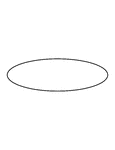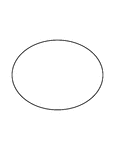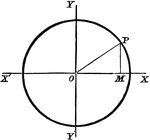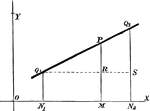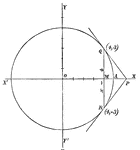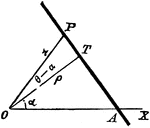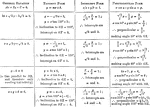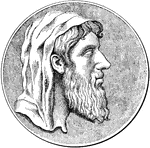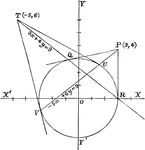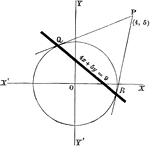
Dog
Tangrams, invented by the Chinese, are used to develop geometric thinking and spatial sense. Seven figures…

Dog
Tangrams, invented by the Chinese, are used to develop geometric thinking and spatial sense. Seven figures…
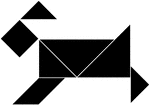
Dog
Tangrams, invented by the Chinese, are used to develop geometric thinking and spatial sense. Seven figures…

Dog
Tangrams, invented by the Chinese, are used to develop geometric thinking and spatial sense. Seven figures…
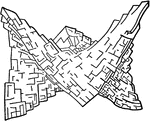
Dolomite
"Hexagonal-rhombohedral. Crystals are usually the unit rhombohedron (cleavage rhombohedron). Faces often…

Dolphin
Tangrams, invented by the Chinese, are used to develop geometric thinking and spatial sense. Seven figures…

Dolphin
Tangrams, invented by the Chinese, are used to develop geometric thinking and spatial sense. Seven figures…

Dolphin
Tangrams, invented by the Chinese, are used to develop geometric thinking and spatial sense. Seven figures…

Dolphin
Tangrams, invented by the Chinese, are used to develop geometric thinking and spatial sense. Seven figures…
Double Arch
Tangrams, invented by the Chinese, are used to develop geometric thinking and spatial sense. Seven figures…
Double Arch
Tangrams, invented by the Chinese, are used to develop geometric thinking and spatial sense. Seven figures…
Double Arch
Tangrams, invented by the Chinese, are used to develop geometric thinking and spatial sense. Seven figures…
Double Arch
Tangrams, invented by the Chinese, are used to develop geometric thinking and spatial sense. Seven figures…

Double Arrow
Tangrams, invented by the Chinese, are used to develop geometric thinking and spatial sense. Seven figures…

Double Arrow
Tangrams, invented by the Chinese, are used to develop geometric thinking and spatial sense. Seven figures…

Double Arrow
Tangrams, invented by the Chinese, are used to develop geometric thinking and spatial sense. Seven figures…

Double Arrow
Tangrams, invented by the Chinese, are used to develop geometric thinking and spatial sense. Seven figures…

Duck
Tangrams, invented by the Chinese, are used to develop geometric thinking and spatial sense. Seven figures…

Duck
Tangrams, invented by the Chinese, are used to develop geometric thinking and spatial sense. Seven figures…

Duck
Tangrams, invented by the Chinese, are used to develop geometric thinking and spatial sense. Seven figures…

Duck
Tangrams, invented by the Chinese, are used to develop geometric thinking and spatial sense. Seven figures…

Eccentric Angle
"In geometry, an angle connected with an ellipse and defined as ... angle BCL, reckoned from one determinate…
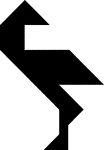
Egret Facing Backward
Tangrams, invented by the Chinese, are used to develop geometric thinking and spatial sense. Seven figures…

Egret Facing Backward
Tangrams, invented by the Chinese, are used to develop geometric thinking and spatial sense. Seven figures…
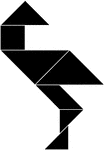
Egret Facing Backward
Tangrams, invented by the Chinese, are used to develop geometric thinking and spatial sense. Seven figures…
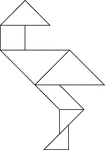
Egret Facing Backward
Tangrams, invented by the Chinese, are used to develop geometric thinking and spatial sense. Seven figures…

Egret Facing Forward
Tangrams, invented by the Chinese, are used to develop geometric thinking and spatial sense. Seven figures…

Egret Facing Forward
Tangrams, invented by the Chinese, are used to develop geometric thinking and spatial sense. Seven figures…

Egret Facing Forward
Tangrams, invented by the Chinese, are used to develop geometric thinking and spatial sense. Seven figures…

Egret Facing Forward
Tangrams, invented by the Chinese, are used to develop geometric thinking and spatial sense. Seven figures…

Construction Of An Ellipse Tangent To Two Parallel Lines
An illustration showing how to construct an ellipse parallel to two parallel lines A and B. "Draw a…
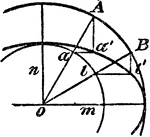
Construction Of An Ellipse
An illustration showing how to construct an ellipse. "With a as a center, draw two concentric circles…
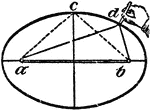
Construction Of An Ellipse
An illustration showing how to construct an ellipse using a string. "Having given the two axes, set…
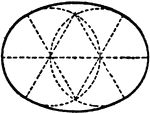
Construction Of An Ellipse
An illustration showing how to construct an ellipse using circle arcs. "Divide the long axis into three…

Construction Of An Ellipse
An illustration showing how to construct an ellipse using circle arcs. "Given the two axes, set off…
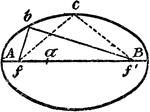
Construction Of An Ellipse
An illustration showing how to construct an ellipse. Given the two axes, set off half the long axis…

Epicycloid
"In geometry, a curve generated by the motion of a point on the circumference of a circle which rolls…
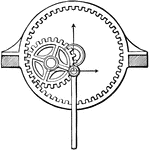
Epicycloidal Wheel
"Epicycloidal wheel, a wheel or ring fixed to a framework, toothed on its inner side, and having in…

Epidote
"Monoclinic. Crystals are often much elongated parallel to the ortho-axis with a prominent development…
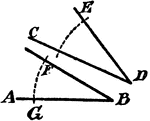
Construction Of An Equal Angle
An illustration showing the construction used to erect an equal angle. "With D as a center, draw the…

Line Divided Into Equal Parts
Illustration used to show how to divide a given straight line into any number of equal parts.

Chord Equation
Tangent lines are drawn from a given external point to a circle. The equation is found by joining their…

Construction Of An Equilateral Triangle Inscribed In A Circle
An illustration showing how to construct an equilateral triangle inscribed in a circle. "With the radius…

Construction Of An Evolute Of A Circle
An illustration showing how to construct an evolute of a circle. "Given the pitch p, the angle v, and…

Construction of an External Tangent to 2 Circles
Illustration used to show how "to construct a common external tangent to two given circles."

Construction of an 2 External Tangents to 2 Circles
Illustration used to show how to construct two common external tangents to two given circles.
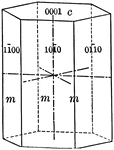
Prism of the first order
"This is a form consisting of six rectangular vertical faces each of which intersects two of the horizontal…

Pyramid of the first order
"This form consists of twelve isoceles triangular faces, each of which intersects two of the horizontal…

Fisherman
Tangrams, invented by the Chinese, are used to develop geometric thinking and spatial sense. Seven figures…

